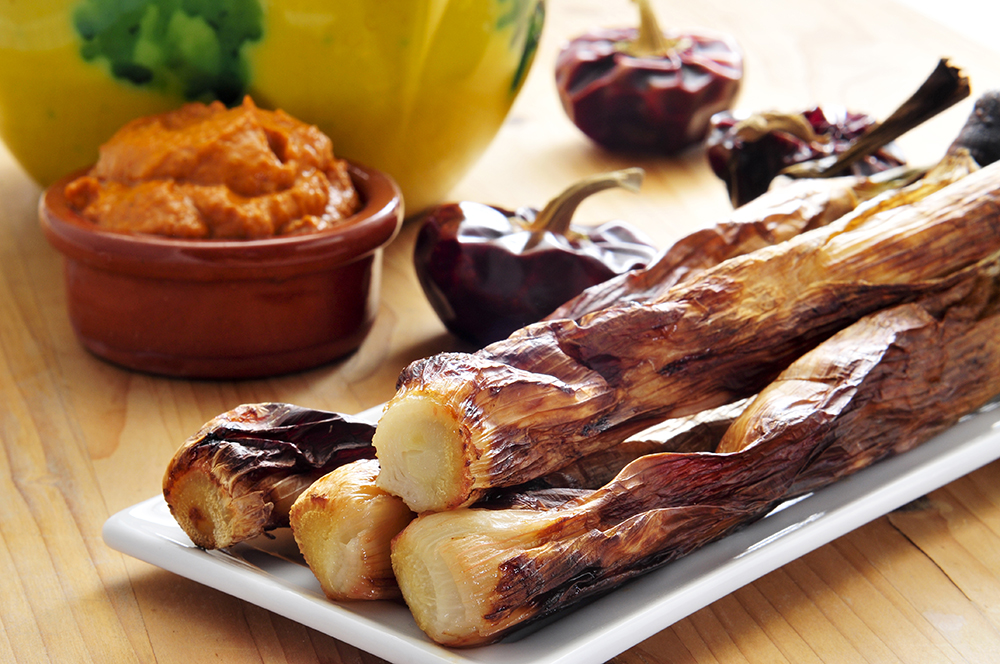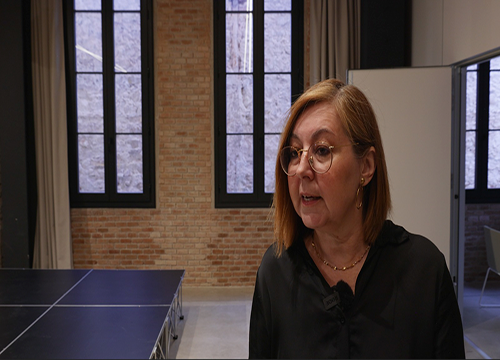La Calçotada,
impossible to translate, you have to taste it

Calçots are milder and less bulbous than onions and have a length of between 15 and 25 cm (white part) and a diameter of 1.7 to 2.5 cm at the root. Planted in trenches, like an onion, as a single bulb, and successively increasing the depth of the soil around the stems throughout autumn and winter, they sprout into 4-10 shoots, roughly the shape of small leeks. The calçot from Valls (Tarragona, Catalonia) is a registered EU Protected Geographical Indication.
The Calçotada is an annual event in Tarragona, Catalonia celebrating the harvest of Calçot. Nowadays it is a tourist attraction in Garraf Comarca and Sitges. It is grilled on a flame, wrapped up in newspaper, served on terra cotta tiles and eaten after peeling with bare hands by dipping them one by one in romesco sauce along with an accompaniment of red wine and bread. This is followed by roasted lamb and other meat, sausage and white beans, For dessert you normally have oranges and cava.
The typical time to taste this kind of sweet onion is during winter and spring.
Romesco Sauce: is a nut and red pepper-based sauce from Tarragona, Catalonia, Spain. It is typically made from any mixture of roasted or raw almonds, pine nuts, and/or hazelnuts, roasted garlic, olive or sunflower oil, bitxo peppers (similar to New Mexico chiles) and/or nyora peppers (a sun dried, small, round variety of red bell pepper). Flour or ground stale bread may be used as a thickener or to provide texture. Other common ingredients include roasted tomatoes, red wine vinegar and onions. Leaves of fennel or mint may be added, particularly if served with fish or escargot. It is very often served with seafood, but can also be served with a wide variety of other foods, including poultry and some red meats like lamb and vegetables.





Sin Comentarios